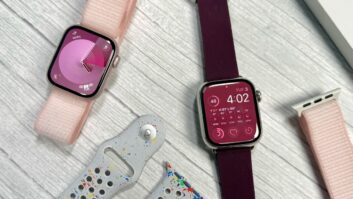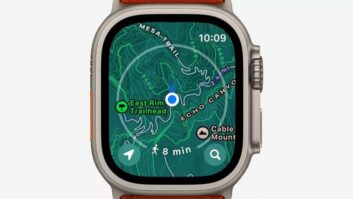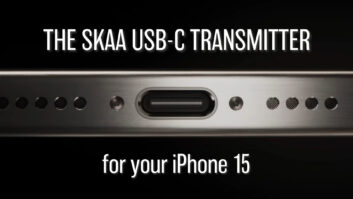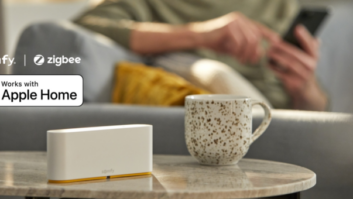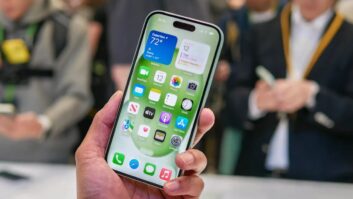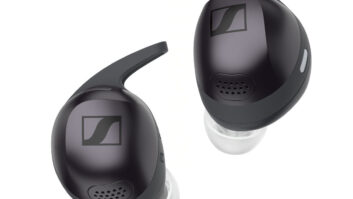Price, selection: Prices range from $349 to more than $10,000 for models in solid 18-karat gold.
Three collection, or styles, are available, each in a choice of 38mm or 42mm face sizes. Both can be set to work a user’s left or right wrist. They also come with choice of finishes and multiple bands, allowing for dozens of combinations. Strap options include leather, stainless-steel link, stainless-steel mesh and elastomer, among many others.
The Apple Watch Sport collection will be available starting at $349 for the version with 38mm face and $399 for the 42mm version. They come in gray or silver anodized aluminum case with choice of sports bands.
The starting price point for the Apple Watch collection will be $549 to $1,099 for the 38mm version, with the 42mm versions costing $50 more. They feature silver or black stainless-steel case and a hardened sapphire-crystal display.
The limited-quantity Apple Watch Edition will feature 18-karat Rose Gold or Yellow Gold case starting at more than $10,000 to $17,000.
Availability: April 24 in the U.S., Australia, Canada, China, France, Germany, Hong Kong, Japan and U.K.
U.S. Distribution: Apple stores, Apple online, boutiques in major cities. At press time, Apple didn’t disclose whether other retailers and carrier stores would offer the product. A Sprint spokesperson referred TWICE to Apple for comment.
Functionality: Apple Watch connects via Bluetooth 4.0 and, if outside Bluetooth range, via Wi-Fi to iPhones running iOS 8, starting with the iPhone 5. The watches send and receive messages through the phone; answer calls using the built-in speaker and microphone; and transfer messages, calls and email from the watch to an iPhone.
Convenience: The Glances feature displays frequently checked information from multiple apps, including weather, stock quotes, calendar and the like. Via a “taptic engine,” the watch taps users on the wrist to alert them to a notification.
App ecosystem: Apple’s WatchKit developers’ toolkit lets developers create their own apps for the watch, deliver notifications to the watch, and let users respond via the watch. CEO Tim Cook announced that thousands of new Apple Watch apps have been created since the WatchKit SDK was released last November. An Alarm.com app, for example, lets users remotely open garage doors from the watch. Users can also view security-camera video. Another app automatically displays an airline boarding pass when you get near an airport and lets you scan the pass to get on board. Hotel reservation information, such as reservation number, also pops up as you get near the hotel. The watch also turns into a room key when waved in front of a door at Marriott hotels.
Health & fitness: Infrared and photo sensors and LEDs on watch bottom deliver data to a new Apple health app to monitor health and fitness. An activity app measures burned calories, brisk activity and how often a wearer stands up during the day. A workout app provides goal-setting and pacing during running, cycling and other workouts.
Interface: The watch features an iOS-based user interface, touchscreen and “digital crown” on the side to scroll, zoom and navigate without obstructing the display. The crown also acts as a home button and way to access Siri.
Voice control: Users can use their voice to dictate replies to messages and, by saying, “Hey Siri,” operate an iPhone’s Siri function.
Apple Pay: The Watch can be used to pay for products at retail via NFC-enabled Apple Pay. The number of banks accepting ApplePay hit more than 2,500 from a launch number of six, and the number of retail locations accepting Apple Pay tripled to almost 700,000 in the U.S. That includes about 40,000 Coca Cola vending machines, growing to 100,000 by year’s end
Passbook: The watch stores boarding passes, tickets, loyalty cards and the like. Passbook also lets users choose which credit or debit card to use for Apple Pay.
Navigation: Users view their current location and receive turn-by-turn navigation, but only when connected to an iPhone.
Remote camera control: The watch doubles as a remote viewfinder for an iPhone camera and lets users snap the photo, or set the timer on the camera.
Remote control: Apple TV and iTunes libraries stored on PCs and Macs can be controlled via Wi-Fi 802.11b/g from Apple Watch, which also controls the iPhone’s iTunes Radio app.
Music: The watch stores and plays music, and it controls playback of iPhone-stored music.
Photos: Apple Watch displays photos that users can swipe through. The digital crown lets users zoom the photos.
Phone-setting control: It allows control of such iPhone settings as airplane mode, Bluetooth and mute, and users can ping an iPhone to determine its location.




